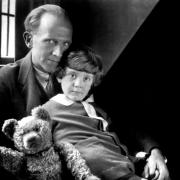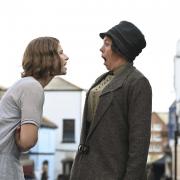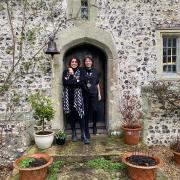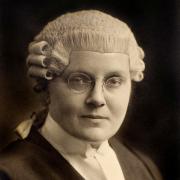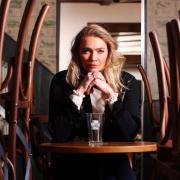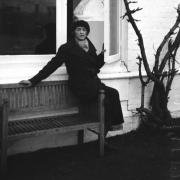From servants’ hall to stardom, historian Louise Peskett traces the remarkable story of Hove author Margaret Powell
One of the finest sights of the Sussex coast is the grand sweep of Hove’s Adelaide Crescent, its line of smart houses testifying to the grandeur of Hove’s past. But this beautiful crescent deserves its place in the history books for another reason. On its eastern side stands number eight. The shiny door and polished knocker must have been an imposing sight when, one day in 1922, a local 15-year-old called Margaret Langley turned up to start her new job as kitchen-maid for the Reverend and Mrs Clydesdale. Margaret had come from a different side of Hove, one where her mother had to burn the bannisters when she couldn’t afford coal, where queuing outside Forfar’s bakery on Church Road for yesterday’s bread was a way of life, and where her scholarship to a grammar-school and dreams of becoming a teacher had to be abandoned so she could earn a living.
The 1920s kitchen-maid was at the very bottom of the domestic service ladder. Margaret’s duties included rising at 5.30am, cleaning flues, lighting fires, black-leading grates, cleaning a 4ft long steel fender and the front door’s brass, scrubbing the steps, cleaning the household’s boots (including polishing the insteps and ironing the laces), and preparing a meal for the other servants – all before breakfast. Afterwards Margaret said: “When I looked at the list, I thought they had made a mistake. I thought it was for six people to do.” Despite her tender years, Margaret quickly adapted to having hands forever raw and bleeding from scrubbing, running up and down the house’s 132 stairs at the beck and call of bells, and once having to catch escapee live lobsters that had been purchased for the evening’s dinner from a passing fisherman. Even when Mrs Clydesdale scolded her for passing the morning newspapers with her bare hands rather than on a silver salver, she took it – after a little cry – in her stride.
But luckily for us, hard work wasn’t all that Margaret was doing in Adelaide Crescent. She was also looking and listening, taking in the affectations of her well-to-do employers as much as the rough and tumble of the servants’ hall. Margaret had a good memory and a nose for a story. When, more than 30 years later, in 1968, as a married mother and housewife, she published her memoir Below Stairs it became a runaway success. Selling 140,000 copies in its first year, Margaret’s riveting tales of house-maid life in Adelaide Crescent and then as a cook in London, blew open the shocking yet sometimes darkly funny world of domestic servants, warts and all.
This year Below Stairs is 50. To say it was groundbreaking is no exaggeration. Its popularity paved the way, in 1971, for LWT’s much-loved Upstairs Downstairs TV drama, a baton still carried today by Downton Abbey. Historic houses, such as Brighton’s Preston Manor, now show off their servants’ cellars as much as the glamorous upper rooms. What made Below Stairs special was its personal touch. Even today, reading it is like having its delightfully plain-speaking writer sit next to you, perhaps with a mug of tea, as she spins tales of the poor parlour-maid who falls in the ‘family way’, the employer who expects her to sleep on a bed with old curtains for blankets, the time she had to rifle through the pig bucket for the discarded kipper the lady of the house decided she wanted to eat after all, the trials of launching herself in the dating game in a post-war world where men are thin on the ground, and ones who don’t scarper when they know you’re a servant even thinner. Her opinions are strident, her humour merciless – she makes an excellent companion.
And what happened after Margaret left service and returned, a mother of three, to Hove is just as remarkable. At last, in her 50s, getting round to the education she’d had to abandon, she started evening courses where, while interviewed for a BBC radio programme in 1966, she was discovered by a publisher who encouraged her to commit her memories to writing.
Margaret authored more books, and in her 60s, became a TV personality, her trademark spectacles and laugh regularly lighting up shows like Celebrity Squares and Blankety Blank. Now this talented woman is commemorated by a blue plaque outside her former house in Hove. A Brighton and Hove Buses bus even bears her name. You can’t help wondering what the young 15-year-old scrubbing steps at number eight Adelaide Crescent all those years ago would have made of the incredible story. Perhaps she’d given a little smile and then just got on with the job.
Louise Peskett runs the Notorious Women of Brighton guided walks and lectures on women from Brighton and Hove and Sussex’s history - www.historywomenbrighton.com




